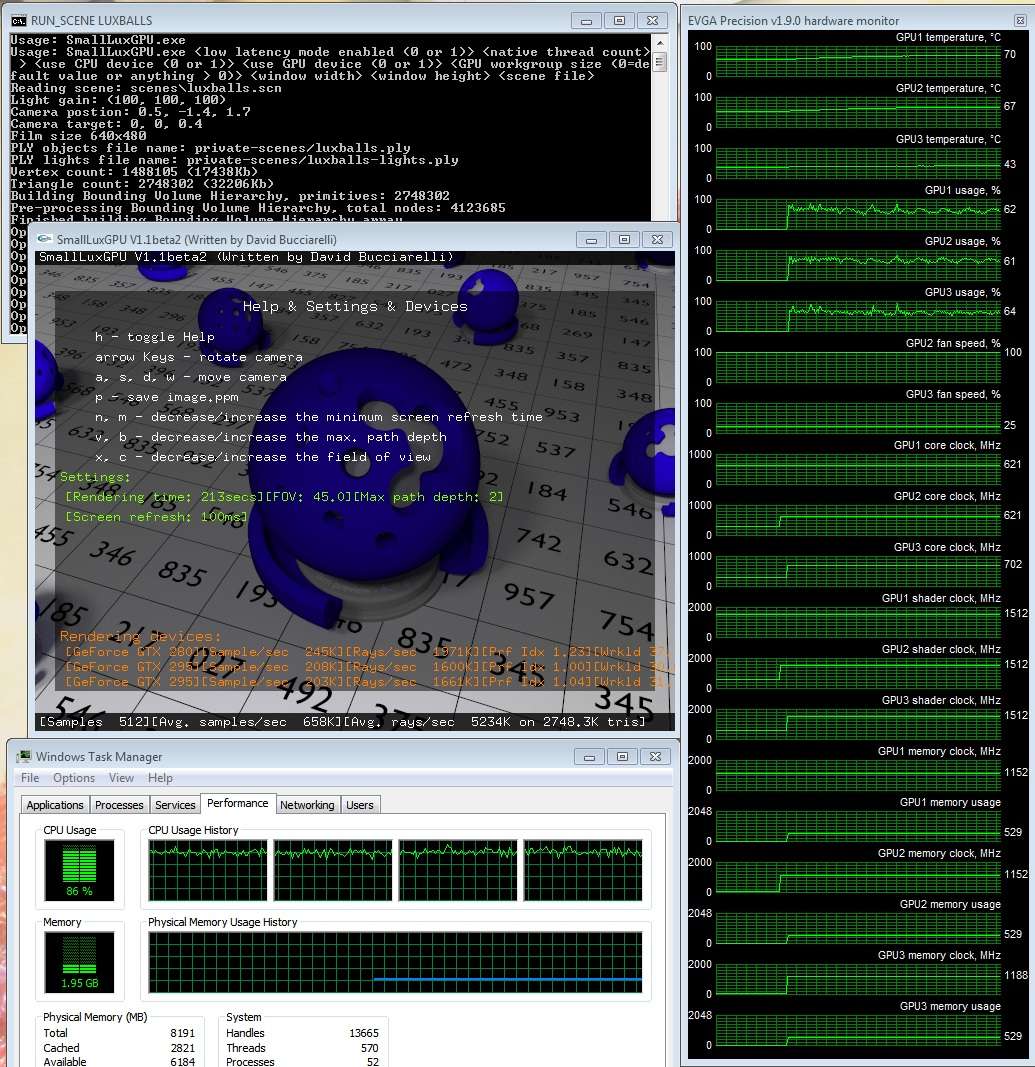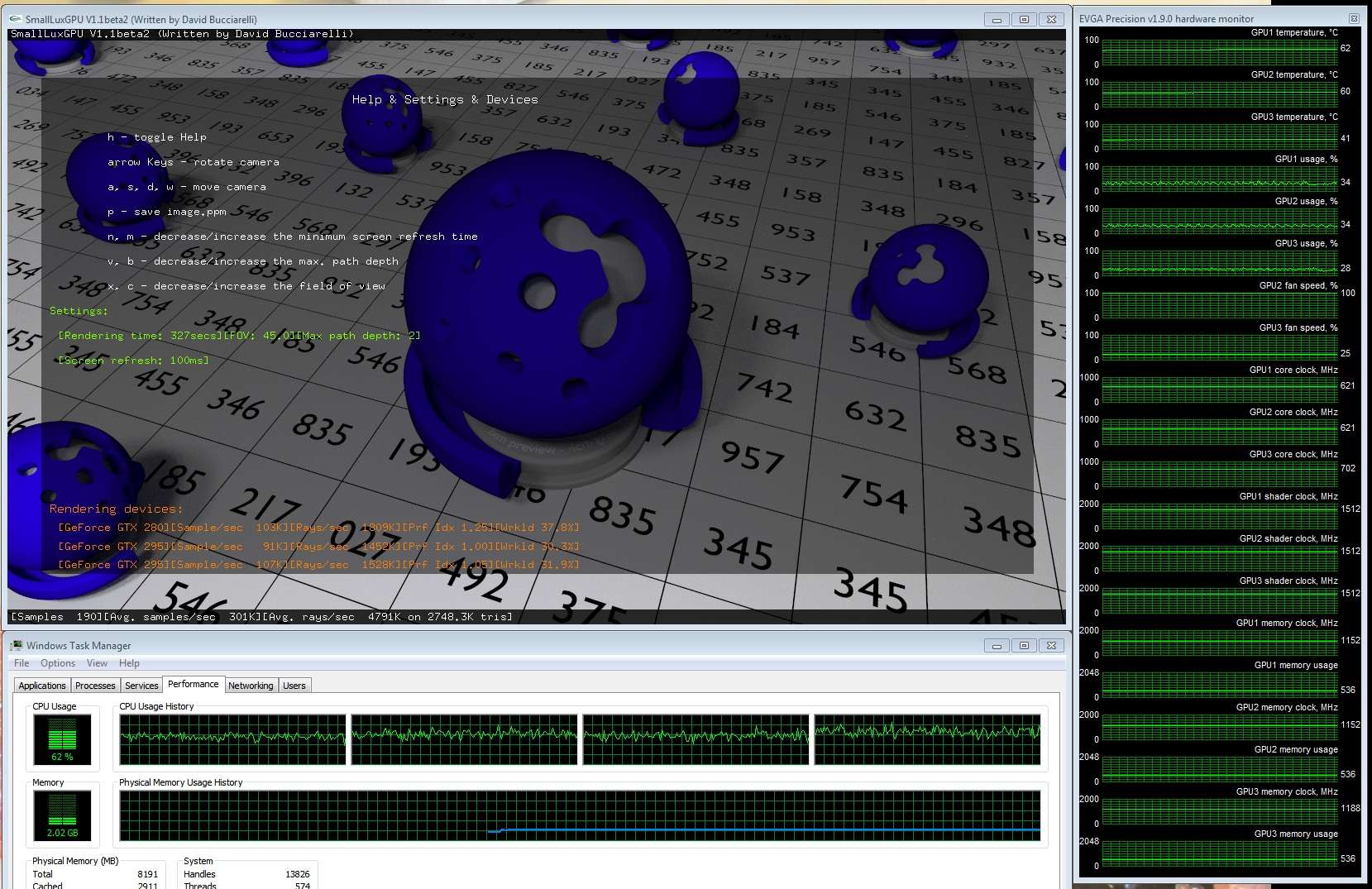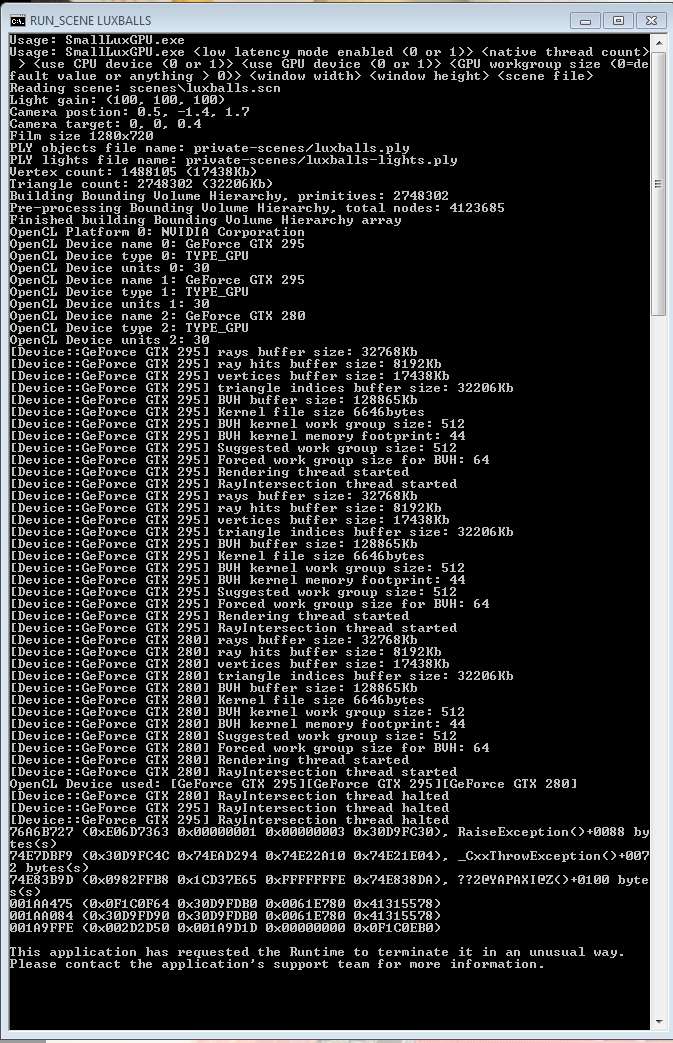@Jawed: yup, I have the option to increase the number of threads to produce more work for the GPU. However the GPU load isn't bad on Luxball, it is about 80% on my PC. It is a bit too variable, it can easy go down if you point the camera in an empty zone of the scene so it may be necessary to introduce more threads in the future.
@Talonman: more than converting the scene from Luxrender to SmallLux, I'm going to insert SmallLux into Luxrender
@Mintmaster: to move ray intersection on the GPU is just the first pass on migration progress that is going to take sometime. The first point was to safeguard all the time already spent in the development of Luxrender by choosing a migration path. The major problem for GPU applications, at the moment, is to not throw all the work already done out of the window. This is, in my opinion, a very important point a bit underestimate. It is not like we can develep everyhting from scratch again.
Ray coherency can help a lot but the main problem is that it is typically lost after the first bounce on a surface so it is mainly useful for eye rays (and I'm tracing 16 rays per pixel after few passes).
@CNCAddict: is it so fast ? I mean, the resolution of the video looks a bit low to me
BTW, I have uploaded a new video to vimeo recorded with the latest version of SmallLuxGPU and my new i7 860/HD5870: http://vimeo.com/8799796
It includes a scene with 2,700,000 triangles:

The new v1.1beta2 is available here: http://davibu.interfree.it/opencl/smallluxgpu/smallluxgpu-v1.1beta2.tgz
@Talonman: more than converting the scene from Luxrender to SmallLux, I'm going to insert SmallLux into Luxrender
@Mintmaster: to move ray intersection on the GPU is just the first pass on migration progress that is going to take sometime. The first point was to safeguard all the time already spent in the development of Luxrender by choosing a migration path. The major problem for GPU applications, at the moment, is to not throw all the work already done out of the window. This is, in my opinion, a very important point a bit underestimate. It is not like we can develep everyhting from scratch again.
Ray coherency can help a lot but the main problem is that it is typically lost after the first bounce on a surface so it is mainly useful for eye rays (and I'm tracing 16 rays per pixel after few passes).
@CNCAddict: is it so fast ? I mean, the resolution of the video looks a bit low to me
BTW, I have uploaded a new video to vimeo recorded with the latest version of SmallLuxGPU and my new i7 860/HD5870: http://vimeo.com/8799796
It includes a scene with 2,700,000 triangles:

The new v1.1beta2 is available here: http://davibu.interfree.it/opencl/smallluxgpu/smallluxgpu-v1.1beta2.tgz






